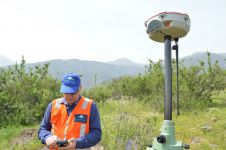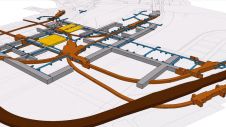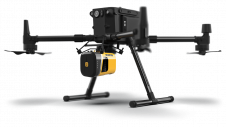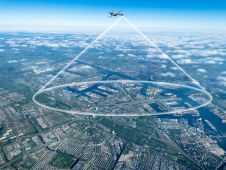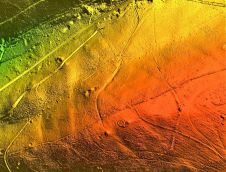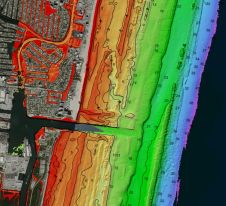Bringing in GIS (1)
GIS通常被认为是寻找问题的解决方案,而GIS解决方案则被推广为所有商业挑战的治疗方法。作者倡导着自上而下的,而不是技术驱动的解决方案,并描述了一种识别战略目标并代表GIS如何支持它们的方法。
As advocates of GIS often discover, many barriers exist to finding funding for a technology-led project that gives priority to functionality over business value. A budget-holder will often lack knowledge regarding GIS and how it can positively impact business; occasionally, they even display cynicism as to its capacity for delivering value.
Discovery Phase
Our approach is to effect change within organisations from the top down, rather than pushing from the bottom up with a technology-driven solution. The ‘top-down’ approach is more effective than seeking to ‘sell the business’ a picture of how GIS might solve their problems. It consists of:
-working with executives to identify strategic objectives and benefits
-assessing the 'as is' state of the organisation
-determining whether change is truly needed
-representing how the GIS change initiative will support strategic objectives.
前两点形成了“发现阶段”,并解决了他们开发了一个三步方法,有助于参与利益相关者,促进对解决方案的改变的需求的共识。为了获得福利,这个想法并不与任何规定的结果相关联,而是最好的解决方案。对于GIS的耳朵倡导这一可能与目标相反,但“解决方案无关”有助于获得利益相关者的信誉和买入。发现阶段分为三个步骤:动员,诊断和愿景。
Mobilisation
The initiative should be treated as a project with a defined set of stakeholders who are actively managed. There needs to be a start and end date, and defined deliverables. The success of any project depends on identifying the right group of stakeholders and working with them to define a scope that covers the breadth of the problems. This is the time to mobilise resources, communicate goals and scope of the discovery phase and set up a governance model and structure. A project brief may be developed that summarises the charter and can be used as a method of communication in engaging and educating stakeholders. It is important to recognise that the organisation is in need of improvement and beneficial change. It does not need a GIS per se, but the values a GIS can deliver, and these will be manifested as business benefits.
Diagnosis
Every organisation is different, as are many of their key challenges. To gain insight into the opportunities for GIS without specifically ‘selling’ the organisation on a GIS solution, a crucial step involves interviewing executives with responsibility and ownership of key areas where GIS may deliver value. Here preparation is key, because executives’ time is limited. An efficient interview requires first identifying what similar organisations have done with GIS to deliver top-line benefits, and, secondly, building a structured path-way of questions categorising organisational priorities for that particular stakeholder. Top-line benefits may include revenue generation, cost containment, service excellence, regulatory compliance, and health and safety.
应根据这些适用于每个利益相关者的方式进行修改面试通路。可以开发一组结构化问题,该问题对应于上面概述的模板标题;关键是提出有关业务的问题,不一定是GIS。一旦确定了价值区域,面试官不仅应该磨练并不仅学习目标,而是如何使组织有利于使其存在支持它。例如,许多企业面临有效的路由工人和服务机组人员最大限度地提高生产力并尽量减少旅行时间的挑战。基于GIS的解决方案可以有助于提高路由效率,从而导致可量化的益处。支持此假设的数据可能存在于时间表和其他管理系统中。在面试结束时,应审查,并将利益攸关方的最大价值领域的优先考虑。然后应该进行时间来审查和综合票据,并考虑到可能提供福利的方式。
Business Situation
深入了解与GIS相关的业务只能通过与各种商业用户和支持它们的IT工作人员进行交谈来构建。这是通过与两组利益相关者的研讨会进行的最好的。除了提供进入当前事态的洞察外,这些研讨会还有助于了解改变文化,态度和障碍的理解。这确保了任何解决方案实际上适用于独特的组织情况。涉及高级管理人员的支持和指导是很重要的。
可以使用各种工具来定义我s’ state, including a ‘rich picture’, which provides a one-page overview of processes, people, technology and data, and represents the complexity of interfaces, machine and manual processes, highlighting areas for potential improvement. A well-presented, rich picture can convince sceptics of the necessity for change by highlighting the complexity of operations and both short- and long-term business improvements enabled by GIS. To build momentum, the diagnosis phase should be performed over a compressed period of four to six weeks, dependingon size and scope of organisation.
愿景
愿景is a collaborative exercise involving key stakeholders, in which a compelling vision of the future is developed. Having determined the strategic objectives, ‘as is’ situation and areas for improvement, all is now tied together by identifying a programme of initiatives. A good tool is a programme blueprint: a one-page overview communicating how the proposed GIS-enabled programme can meet the needs of multiple departments and stakeholders. This exercise energises the organisation and focuses on meeting business needs at all levels. The vision highlights a desired state, initiatives to be realised and the metrics and measures of success. The desired state must align with the goals and objectives previously identified, and the metrics and measures have quantifiable and tangible benefits. Toward the end of this stage, a ‘Case for Change’ workshop is held, where the future high-level vision is reviewed and initiatives to accomplish it defined. Subject to agreement with stakeholders, opportunity may be offered for ‘quick win’ improvements while building the business-case substantiating major change.
结束言论
与任何重大变革计划一样,启用GIS的计划应该为如何履行战略目标并以自己的术语达成战略目标,以了解他们的优先事项如何提供基础的令人信服的案例。为利益攸关方会议做好准备,第一次获得权限对于获得信誉至关重要,并灌输对GIS增加价值的能力的影响。显然,将愿景,组织目标,战略目标和支持GIS技术联系在识别需要的需求的怀疑论者,并为确定投资回报和计划治理所需的定量分析,这一切至关重要,以确保交付至关重要。
This is the first of a series of three articles. The next will describe how to perform quantitative analysis and treat considerations required for structuring delivery and support post-implementation.
让你的收件箱更有趣。Add some geo.
Keep abreast of news, developments and technological advancement in the geomatics industry.
免费注册















